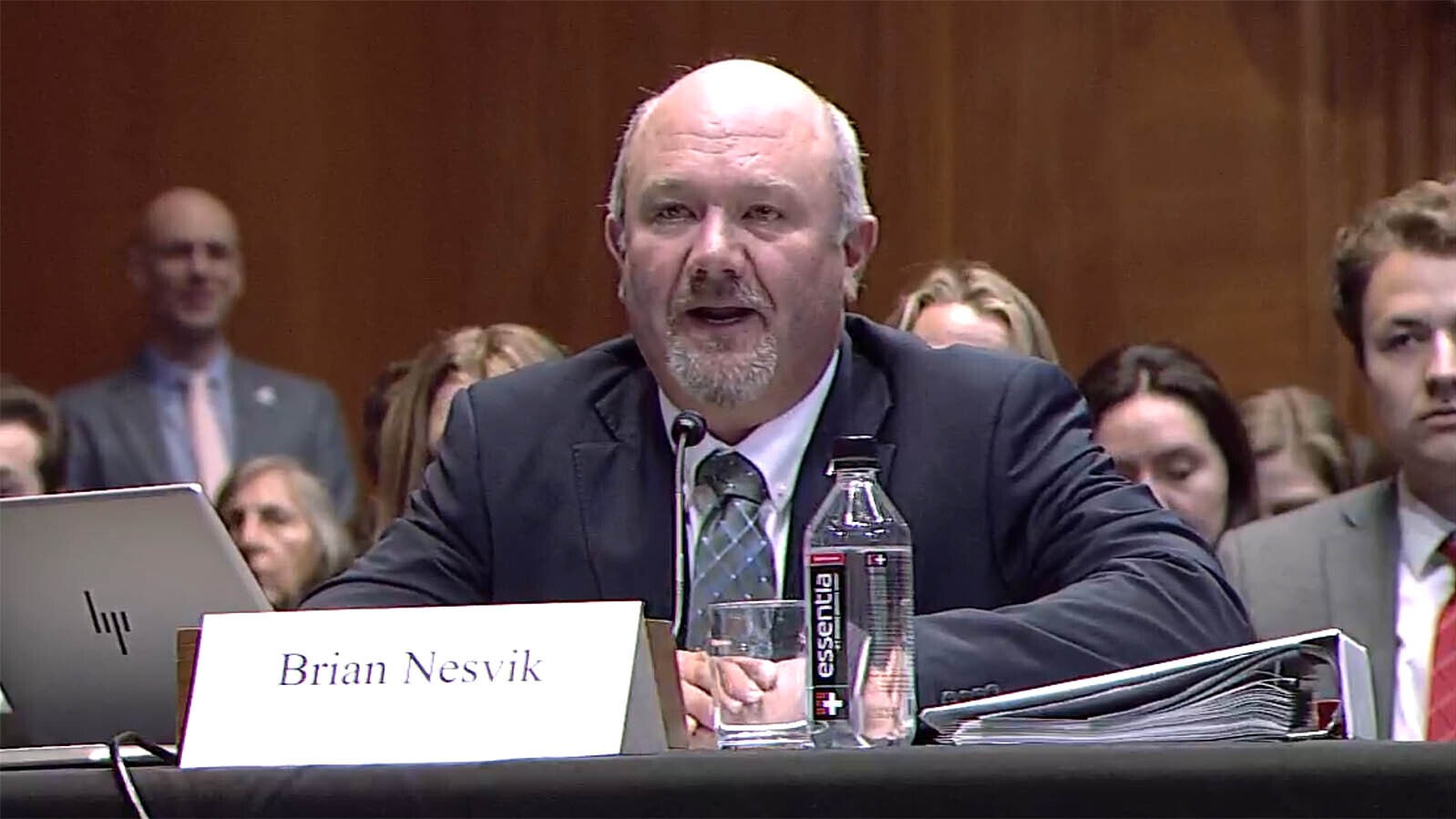Astronomers are watching a new comet pass through our solar system with great interest. The 33-billion-ton interstellar object is super flat and, based on the glow emanating from it, is believed to contain a shockingly high quantity of nickel.
3I/ATLAS was discovered by the Asteroid Terrestrial-impact Last Alert System (ATLAS) based in Chile. It’s only the third interstellar object to be observed in our Solar System, meaning it originated from somewhere beyond our infinitesimally small section of the universe.
As of Friday, nickel is selling for $6.90 per pound. That means that, at 33 billion tons, that asteroid would be potentially worth $455 trillion.
That would make the $1 billion of nickel ore Lander’s Visionary Metals Corp. hopes to get out of the prospects near Jeffrey City seem like chump change.
However, humanity has yet to achieve space mining. Even if we had, this comet is too far and too much trouble for whatever would be gained.
“I kind of doubt that this one would have much valuable mineral content,” said Max Gilbraith, planetarium coordinator at the University of Wyoming. “It’s just another snowball from an interstellar gas cloud hurtling around the sun.”
Snowball Flight
Comets are dirty snowballs. Unlike asteroids, which are made up primarily of rock and metals, comets are primarily made of dust and the “volatile ices” of frozen water, carbon dioxide, and ammonia.
When comets pass by the sun, the sun’s energy vaporizes those volatile ices. That creates the tails that can be observed trailing comets as they hurtle through space.
Astronomers are much more interested in 3I/ATLAS’s scientific value than its monetary value. Most of the observed comets in human history originated from our Solar System, but this comet has an entirely different origin.
“It's the third interstellar comet we’ve discovered,” Gilbraith said. “We’ve seen three of these comets in eight years.”
According to NASA, the tremendous amount of light surrounding 3I/ATLAS is being emitted rather than reflected. That means it’s generating a tremendous amount of its own light, rather than reflecting the light from the sun.
That light spectrum is what has astronomers so intrigued. It suggests that the comet has a high quantity of nickel and a relatively low quantity of iron.
“The distinction is that nickel is quite rare compared to iron,” Gilbraith said. “They're very close to each other in the elemental table, but they’re different daughter products of different things that happen when stars, particularly high-mass stars, die.”
Pure Nickel?
Some reports on 3I/ATLAS have said it’s made of “pure nickel.” Gilbraith is skeptical of that claim for several reasons.
“You have to be careful about your verbiage,” he said. “The comet is very much a volatile object, so it’s still mostly made out of water and carbon dioxide ice. It has nickel and other metals in it, but the true ratio of nickel to iron won't be determined until you do UV imaging with the Hubble Space Telescope in November.”
Iron is one of the more abundant metals in the universe. Nickel, by comparison, is extremely rare. According to Gilbraith, that’s giving astronomers clues about the origin of this comet.
“We don’t make nickels with nickel,” he said. “Nickel is much denser and much rarer in the Earth’s surface than iron, but comets and asteroids haven’t congealed in layers like Earth and the other planets. That's why the nickel to iron ratio is really interesting, because it can tell us the age and the origin of the object.”
As planets age, they form distinct layers with different compositions. Since nickel is so dense, it usually sinks toward the core of the Earth more quickly than less-dense minerals like iron, which increases its rarity.
Our Solar System and its planets formed around 4 billion years ago. Some astronomers believe 3I/ATLAS could be around 7 billion years old, much older than everything in our neighborhood.
The abundance of nickel gives 3I/ATLAS enormous scientific value, but Gilbraith said its economic value is degraded by the day.
“This comet’s only half a kilometer in diameter, and its nickel-to-water ice ratio could be as low as 19 parts to 1,” he said. “As it vaporizes, it’s a perfectly prepared scientific spectroscopy experiment, but the rocky asteroids in our Solar System are easier and more available to us.
Also, 3I/ATLAS is over 420 million miles away from the sun. That’s over four times Earth’s distance from the sun, which makes it just a bit beyond our reach.
Not Worth A Plug Nickel
Comet 3I/ATLAS will make its closest approach to the sun, within 126 million miles, on Oct. 29. Some comets give their best shows as they streak past the sun, but this comet won’t be.
“It’s moving through the constellations on the ecliptic plane of the Earth on the far side of the sun,” Gilbraith said. “That means it will only be visible to equatorial regions of Earth just after sunset.”
Even if astronomers can’t see this comet with their telescopes, they’ll be eagerly watching their computers for the scientific analysis as it comes in. This extremely old, flat, nickel-rich comet has much to reveal about the history of the universe.
“Since this is an interstellar comet, the chances it has ever gone around a star and had an outgassing event that creates a comet's tail are probably zero,” Gilbraith said. “This is probably the first time this comet has ever had a tail.”
There’s a lot of exciting potential in asteroid mining, even if humanity has hundreds of thousands of years before it can do it. 3I/ATLAS might be worth $455 trillion in today’s market, but it’s too far and volatile for mining, making its nickel content worth less than a nickel-free U.S. nickel.
Andrew Rossi can be reached at arossi@cowboystatedaily.com.





